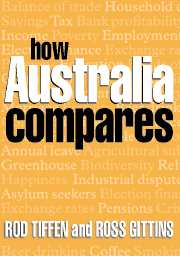Book contents
- Frontmatter
- Contents
- Reading the Tables
- Acknowledgments
- Abbreviations
- Introduction
- 1 People
- 2 Government and Politics
- 3 Economy
- 4 Work and the Labour Force
- 5 Government Taxes and Spending
- 6 Health
- 7 Education
- 8 Inequality and Social Welfare
- 9 International Relations
- 10 Environment
- 11 Science and Technology
- 12 Telecommunications and Computing
- 13 Media
- 14 Family
- 15 Gender
- 16 Lifestyles and Consumption
- 17 Crime and Social Problems
- 18 Religion, Values and Attitudes
- Sources and References
- List of Tables
8 - Inequality and Social Welfare
Published online by Cambridge University Press: 22 September 2009
- Frontmatter
- Contents
- Reading the Tables
- Acknowledgments
- Abbreviations
- Introduction
- 1 People
- 2 Government and Politics
- 3 Economy
- 4 Work and the Labour Force
- 5 Government Taxes and Spending
- 6 Health
- 7 Education
- 8 Inequality and Social Welfare
- 9 International Relations
- 10 Environment
- 11 Science and Technology
- 12 Telecommunications and Computing
- 13 Media
- 14 Family
- 15 Gender
- 16 Lifestyles and Consumption
- 17 Crime and Social Problems
- 18 Religion, Values and Attitudes
- Sources and References
- List of Tables
Summary
Inequality of income
The tables on this page measure the inequality of income using different methods. Table 8.1 uses the most common measure, the Gini coefficient, which takes a value of 0 if every household has identical income and a value of 1 if one household has all the income. Thus an increase in the coefficient represents an increase in inequality. Sweden is the most equal country, followed by its Scandinavian neighbours and Belgium and the Netherlands. The United States and United Kingdom have the greatest inequality, followed by Italy. Despite its egalitarian self-image, Australia is very much towards the unequal end of the spectrum.
Table 8.2 measures income inequality over the same period but uses a different method. It compares the disposable income of those at the 90th percentile (i.e. 10% down from the top of the distribution of incomes) with the income of those at the 10th percentile (i.e. 10% up from the bottom). In this way it seeks a more representative measure of inequality, one that is unaffected by the minority of incomes that are either extremely high or extremely low.
The rankings in Tables 8.1 and 8.2 are highly correlated. The same seven countries (with some changes in order) are still the most equal, and the same five countries (again with some changes in order) the most unequal.
- Type
- Chapter
- Information
- How Australia Compares , pp. 137 - 154Publisher: Cambridge University PressPrint publication year: 2004



